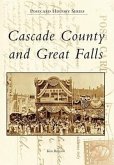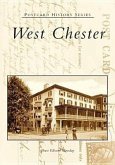In 1762, Abraham Wing led a group of Quakers to lands he had acquired on the edge of the Adirondacks. Soon, a cluster of log cabins surrounded the mills that Wing had built at the falls on the Hudson River. By the early 19th century, Queensbury consisted of several small hamlets and the village of Glens Falls, which grew into an industrial and commercial center. Factories produced lumber, lime, paper, shirts, and cement, and the city featured many stores, churches, theaters, and a hospital. The surrounding township remained largely agricultural but offered such recreational activities as golf, swimming, fishing, boating, and skiing. After World War II, commercial momentum shifted to Queensbury as motels, tourist attractions, and shopping centers sprang up along Route 9, the main route to Lake George and the Adirondacks.
Hinweis: Dieser Artikel kann nur an eine deutsche Lieferadresse ausgeliefert werden.
Hinweis: Dieser Artikel kann nur an eine deutsche Lieferadresse ausgeliefert werden.








